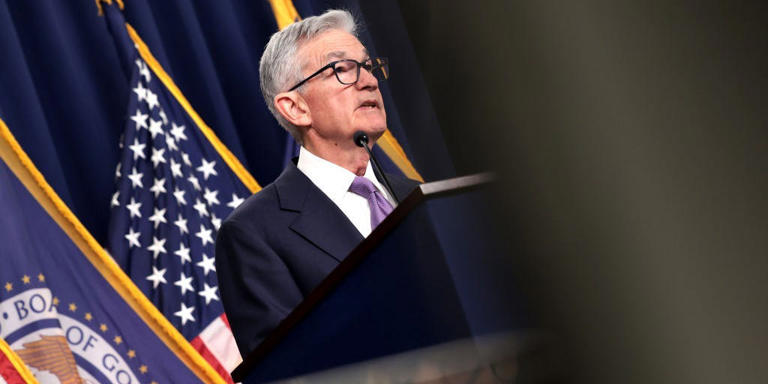Key Takeaways:
JPMorgan warns that Bitcoin’s surging price could delay the Federal Reserve’s interest rate cuts.- They suggest that froth in risky assets, including Bitcoin, may lead to prolonged higher interest rates.
- Premature rate cuts could inflate asset prices or worsen inflation, according to JPMorgan.
- Central banks might be cautious with rate cuts to avoid exacerbating asset bubbles or inflationary pressures.
- This underscores how Bitcoin’s movement impacts monetary policy decisions.
JPMorgan’s strategist Marko Kolanovic suggests that the record-breaking rally in Bitcoin, coupled with all-time highs in the stock market, may prompt the Federal Reserve to delay its anticipated interest rate cuts slated for later this year. He notes that this surge indicates the accumulation of “froth” in risk assets. This accumulation of froth could compel the Fed to postpone its planned interest rate cuts, which are typically seen as stimulative for risk assets, out of concern that such cuts could exacerbate inflationary pressures.
Kolanovic warns that this delay in interest rate cuts could prolong the maintenance of higher interest rates, as premature rate reductions might further inflate asset prices or fuel inflation. Currently, market expectations anticipate the Fed to execute at least three interest rate cuts in 2024, with the first cut expected in June, according to the CME FedWatch Tool. Given that much of the stock market’s recent rally has been fueled by expectations of subdued inflation and lower interest rates, any further delay in the Fed’s planned interest rate cuts could disrupt the bullish narrative prevailing in the stock market.
According to Kolanovic, who paraphrases recent comments from Fed governor Christopher Waller, if the disinflationary trend remains intact, there may not be a compelling reason for the Fed to rush into interest rate cuts. Despite this perspective, Kolanovic maintains a bearish stance on stocks, suggesting that the current market is priced for perfection, with limited evidence of investors hedging against risks. He points out that stock volatility has hovered near multi-year lows, which concerns him given the high valuation of stocks relative to bonds and cash. Additionally, he notes that stocks are heavily owned, concentrated in large-cap companies, heavily reliant on the narrative around artificial intelligence, and appear to be pricing in minimal growth risks, given their elevated levels. This assessment underlines Kolanovic’s cautious outlook on the stock market.
